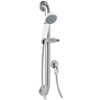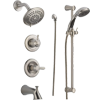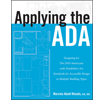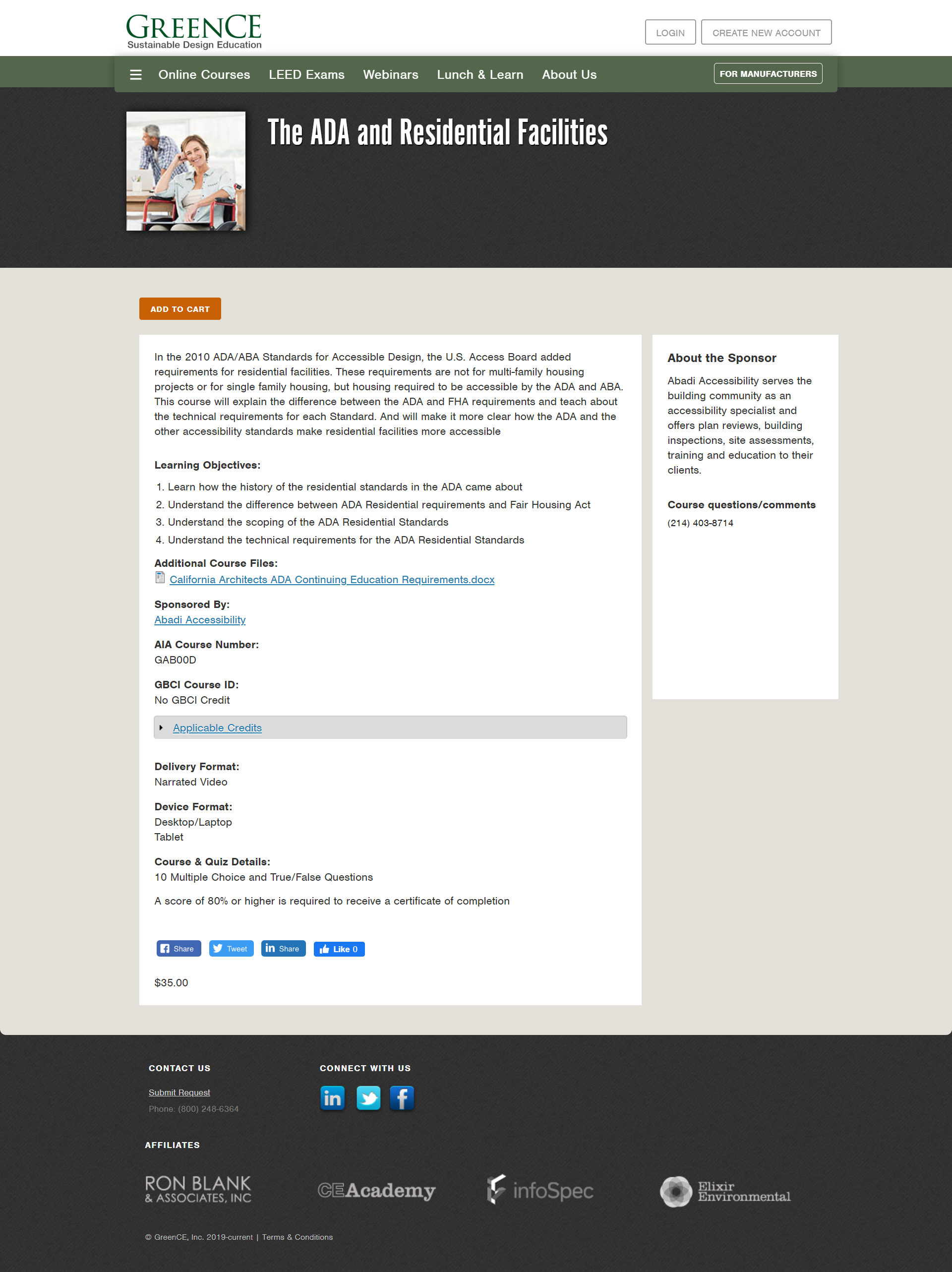This book, written from the perspective of a lawyer with a disability (the author is hearing impaired), demonstrates that the Americans with Disabilities Act (ADA) is not just a law, but a way of life. It also discusses preventive lawyering with regards to the ADA. Since the first edition was published, the U.S. Supreme Court has decided over a dozen cases on the ADA and there have also been many appellate decisions as well. In this second edition, the Supreme Court decisions not included in the first edition and some of the appellate opinions that have come down since then are analyzed to provide the reader with an understanding of the workings of the ADA as it exists today.
Blog Archives
- Uncategorized (80)
- Doors (57)
- Ramps (28)
- Roads (8)
- Rails (17)
- Bathrooms (27)
- Kitchens (25)
- Public Spaces (81)
- Parking (38)
- Transportation (23)
- ADA (22)
- Stairs (4)
- phones (1)
- accessible routes (19)
- laundry room (1)
- appliances (22)
- safe harbors (1)
- hotels (10)
- schools (10)
- Wet Bars (1)
The ADA Companion Guide
Understanding the Americans with Disabilities Act
Tuesday, May 5th, 2020Symmons
Friday, April 10th, 2020Delta Handheld
Friday, April 10th, 2020American Standard
Friday, April 10th, 2020Applying the ADA
Thursday, January 2nd, 2020A guide to real-world applications of The 2010 Americans with Disabilities Act Standards for Accessible Design
Applying the ADA helps architects and developers understand better how the rules for eliminating barriers in the built environment apply to everyday life and how to best implement them in the design and construction of a broad variety of buildings and facilities.
By showing how The 2010 Americans with Disabilities Act Standards for Accessible Design have been applied in various contexts and building types, this extensively illustrated guide helps readers quickly understand the requirements of the standards and how to apply them to both new construction and renovation. Written by an architect who consults regularly on accessibility issues for design professionals, building owners, and facility managers, this user-friendly guide features 100 photos and 150 drawings that take the guesswork out of applying the standards to real-world projects. Building types covered include:
- Healthcare and senior living facilities and hospitals
- College and university facilities
- Elementary and high schools
- Hotels and other transient lodging facilities
- Amusement parks and play areas
- Historic preservation and remodels
- Retail and office spaces
Applying the ADA is an indispensable resource for architects, interior designers, owners, developers, and facility managers. It is also important reading for students of architecture and interior design.
The ADA Companion Guide
Thursday, January 2nd, 2020The ultimate reference to the latest ADA and ABA Accessibility Guidelines for Buildings and Facilities
Architects, interior designers, engineers, facility managers, and related building professionals will find this to be a handy guide to the latest Americans with Disabilities Act Accessibility Guidelines (ADAAG), as published by the U.S. Access Board in the Federal Registry in 2004 and subsequently updated. As this book went to press in 2010, the U.S. Justice Department was expected to soon adopt the latest ADAAG, as covered in this book.
These guidelines have been revamped to offer more cohesive architectural guidance that improves the accessible design of buildings for individuals with special needs. Learn what the essentials of these revised guidelines are with this handy reference—what has changed, what hasn’t, how to apply the guidelines, and what effect they will have on both the public and private sectors—with:
- An easy-to-use format that follows the same organization as the actual revised ADAAG, with the revised numbering system, updated scoping, and technical provisions
- A chapter focused on the Architectural Barriers Act (ABA), which is specific to those dealing with federal buildings and facilities funded by the federal government
- Special commentaries on crucial or hard-to-understand examples, with photographs that illustrate practical applications of the guidelines, written by an architect who is an accessibility expert that consults regularly with design professionals, building owners, and facility managers
The ADA Companion Guide combines the complete ADAAG and ABA guidelines with explanations, commentary, and illustrations, offering easy-to-follow guidance on how to eliminate unnecessary architectural barriers for persons with disabilities.
Applying the ADA on Existing and Altered Buildings
Tuesday, November 26th, 2019Learn the ins and outs of ADA when remodeling existing buildings.
Description
Accessibility is fundamental in today’s architecture practice. The Americans with Disabilities Act (ADA) applies not only to new construction, but also when remodeling existing facilities—and the guidelines and exceptions can be confusing.
In this case-study course, we’ll present real-life examples of applying the ADA during renovations. Topics to be covered include:
- The challenges of knowing how and when to apply the ADA to ensure accessibility compliance
- The difference between an alteration and an alteration of an area containing a primary function
- What happens if an existing building is not being altered, and what exceptions apply when an alteration occurs
Learning objectives
- Learn the history of ADA and how it came about
- Learn how to apply the standards on existing buildings
- Lean how to apply the standards in altered buildings as well as altered areas that may contain a primary function
- Understand any exceptions on when the ADA is applied and when it is not required
The ADA and Residential Facilities
Tuesday, November 26th, 2019In the 2010 ADA/ABA Standards for Accessible Design, the U.S. Access Board added requirements for residential facilities. These requirements are not for multi-family housing projects or for single family housing, but housing required to be accessible by the ADA and ABA. This course will explain the difference between the ADA and FHA requirements and teach about the technical requirements for each Standard. And will make it more clear how the ADA and the other accessibility standards make residential facilities more accessible
- Learn how the history of the residential standards in the ADA came about
- Understand the difference between ADA Residential requirements and Fair Housing Act
- Understand the scoping of the ADA Residential Standards
- Understand the technical requirements for the ADA Residential Standards
 Abadi
Abadi 








